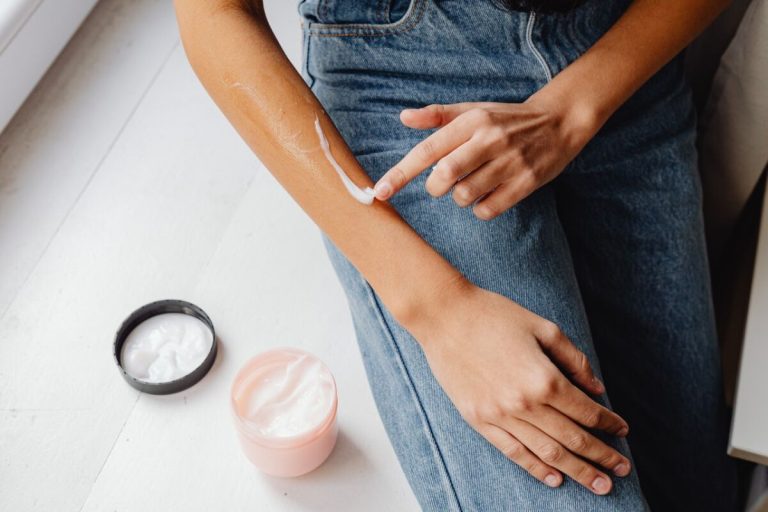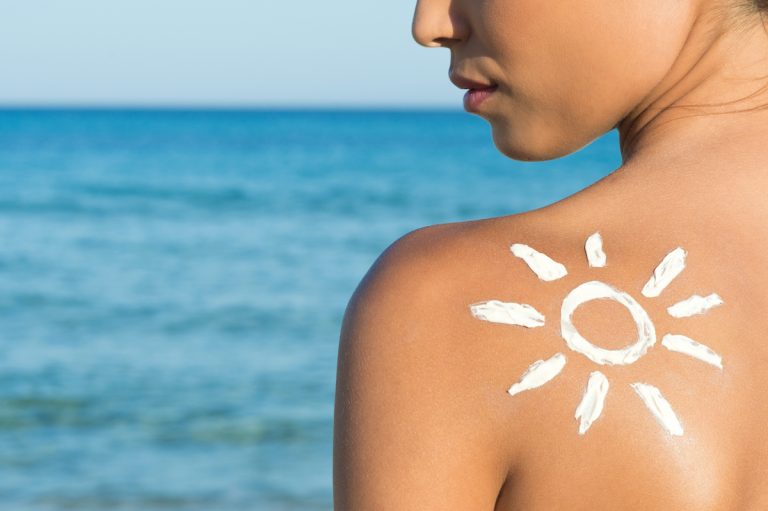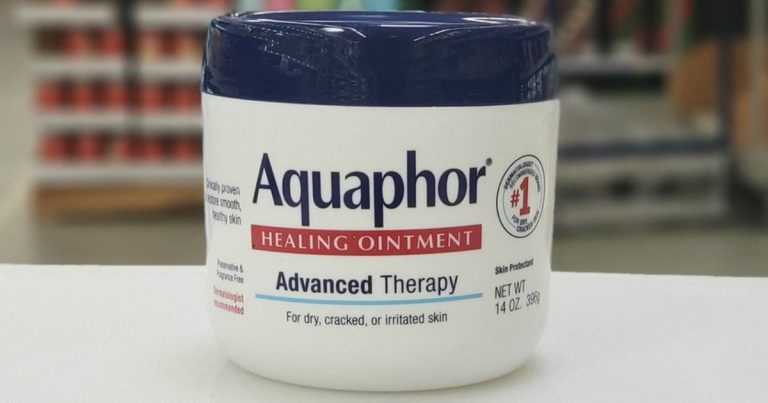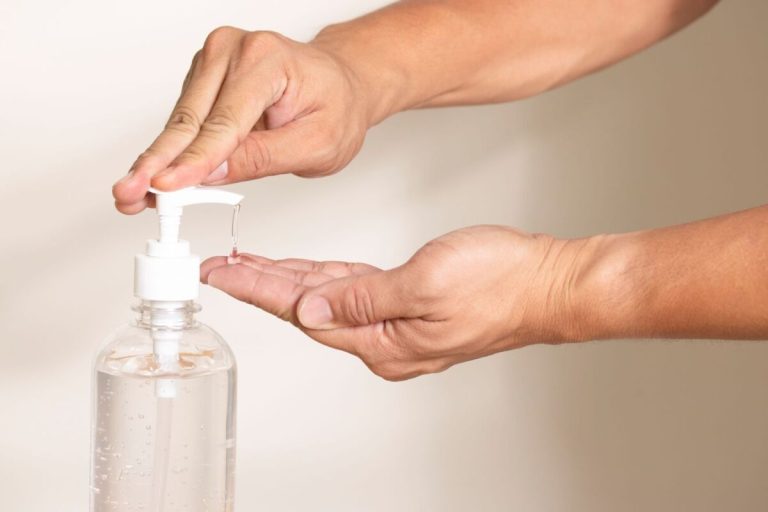5 Best Self Tanners for Covering Vitiligo
Living with vitiligo can be challenging. The change in skin pigmentation that vitiligo causes frequently has an impact on a person’s appearance and self-esteem. While there is no cure, many people with the condition use self-tanning products as a temporary solution to even out skin tone and cover up white patches of vitiligo.
As someone who has been living with vitiligo for years, I’ve tried my fair share of self-tanners to help minimize the appearance of my white patches. Through trial and error, I’ve learned that not all self-tanners work equally well for vitiligo. The key is finding one that provides natural-looking, even coverage.
In this guide, I will explain the key factors to consider when choosing the best self-tanner for vitiligo. I’ll also provide my top recommendations based on ingredients, effectiveness, and ease of use.
What to Look for in a Self-Tanner for Vitiligo
Contents
- What to Look for in a Self-Tanner for Vitiligo
- Best Self Tanner for Covering Vitiligo
- 1. Best Organic: COOLA Organic Sunless Tan Serum
- 2. Best Mousse: Miami Gorgeous Medium-Dark Self Tanning Mousse
- 3. Best Gradual Tanner: Tanologist Gradual Tanning Lotion
- 4. Best Instant Color: L’Oreal Paris Sublime Bronze Self-Tanning Serum
- 5. Best Vitiligo Camouflage: Oxyvita Skin Camouflage Gel
- How I Apply Self-Tanners for Vitiligo
- How Does Self Tanner Work on Vitiligo?
- How Long Does Self Tanner Last on Vitiligo?
- Do Self Tanners Stain Vitiligo Spots?
- FAQs
- Covering Up Vitiligo with Self-Tanners
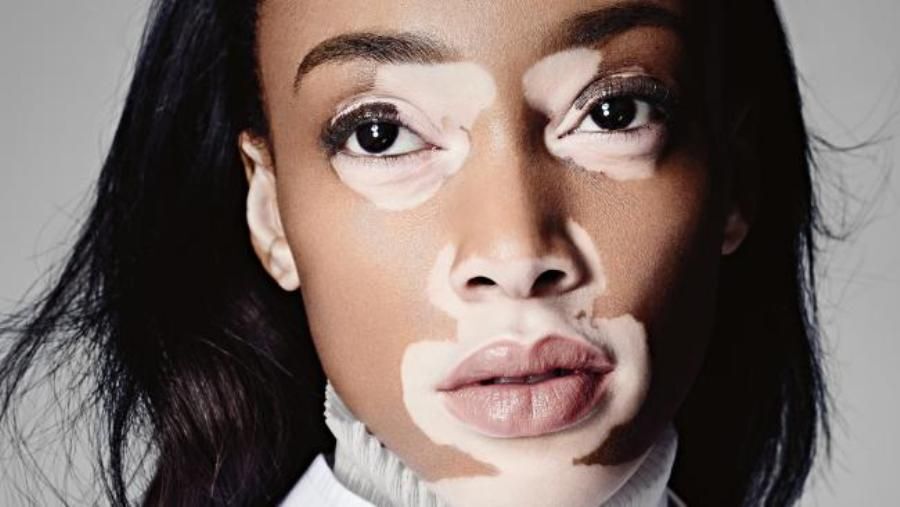
When shopping for a self-tanning product to cover up vitiligo, there are a few key features you’ll want to look for:
Gradual Color Development
Instant self-tanners that provide an immediate dark color tend to look unnatural. For vitiligo, it’s best to use a gradual self-tanner that slowly develops color over several hours or days. This creates a more seamless, natural-looking result as the tan builds up.
Customizable Color
Since vitiligo affects skin pigmentation differently on every person, it’s helpful to choose a self-tanner that allows you to customize and control the depth of color. Look for products that come in different tinted shades or drops that can be mixed into moisturizers.
Skin-Nourishing Ingredients
Many self-tanners contain drying alcohols and other chemicals that can irritate sensitive skin. Seek out products with natural, hydrating ingredients like aloe vera, coconut oil, shea butter, and vitamin E. This helps keep skin moisturized and avoids emphasizing flaky patches.
Streak-Free Application
Uneven application is a common self-tanning pitfall that can make vitiligo patches stand out even more. Using a self-tanner with a fast-drying formula that applies cleanly without streaks will provide the most seamless coverage.
Best Self Tanner for Covering Vitiligo
Now let’s get into the list of my top self tanning recommendations for anyone with vitiligo!
1. Best Organic: COOLA Organic Sunless Tan Serum
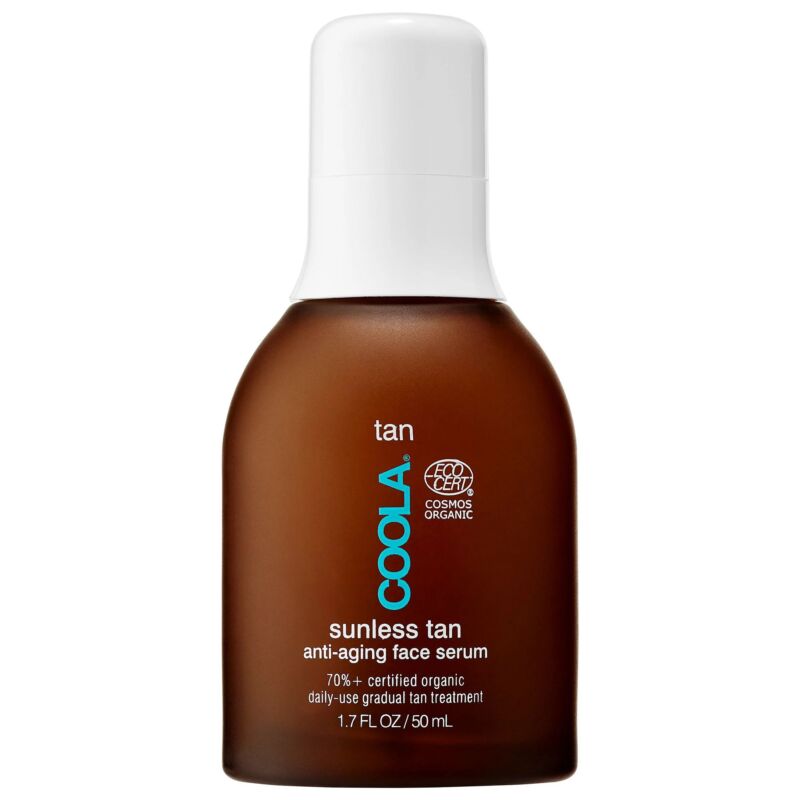
Key features:
- Organic, non-GMO formula
- Buildable medium tan
- Plant stem cells and hyaluronic acid
- Sweet tropical scent
My top choice is COOLA’s organic sunless tanning serum. This serum provides a gorgeous glow thanks to its natural active ingredients.
The formula contains plant stem cells from edelweiss flowers that boost collagen and reduce signs of aging. It also has hyaluronic acid to hydrate and plump the skin. These nourishing ingredients make it gentle enough for frequent use on sensitive vitiligo spots.
I love that the color develops into a natural-looking medium tan. The serum is lightweight and absorbs fully without any sticky residue. It smells like coconut pineapple – summer in a bottle!
A little goes a long way with this serum. I use 4-5 drops at a time, smoothing carefully onto each vitiligo patch on my body. It blends seamlessly and lasts 4-5 days on average before needing a reapplication.
While the bottle is small at just 1.7 oz., it’s very concentrated so a bottle ends up lasting for months. For an all-organic self tanner, I think the value is excellent.
2. Best Mousse: Miami Gorgeous Medium-Dark Self Tanning Mousse
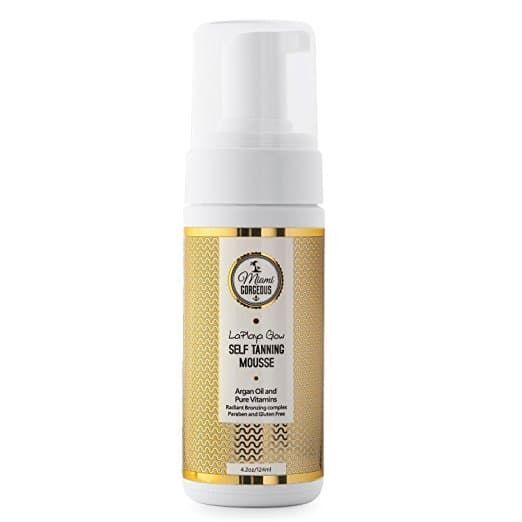
Key features:
- Lightweight mousse formula
- Builds to a medium-dark tan
- Vegan and cruelty-free
- Soft floral scent
For flawless vitiligo coverage in a mousse, I recommend Miami Gorgeous Self Tanning Mousse. The lightweight mousse texture makes blending easy.
This mousse uses certified organic DHA extracted from sugar beets. It develops into a natural-looking medium-dark tan. I find the color works well for covering my pale spots, especially on my legs and arms.
The formula includes skin-loving ingredients like argan oil, coconut oil, aloe vera, and elderflower extract. It leaves my skin feeling soft without drying or irritation.
One thing I like about this mousse is that a little goes a long way. The 7.4 oz bottle lasts for a surprising number of full body applications.
The light floral scent smells pleasant and doesn’t have that strong typical self tanner smell. For flawless coverage with a smooth mousse that spreads easily, Miami Gorgeous is a winner.
3. Best Gradual Tanner: Tanologist Gradual Tanning Lotion
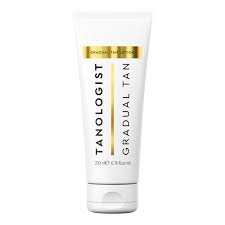
Key features:
- Builds gradual, natural-looking color
- Doesn’t transfer onto clothes/sheets
- Hydrating formula
- Unscented
For a low-maintenance approach, I suggest trying Tanologist Gradual Tanning Lotion. This lotion allows you to build color slowly over time.
Gradual self tanners like this contain lower percentages of DHA. With daily use, the tan builds in intensity so you can customize the exact level of color you want.
I find gradual tanner is great for maintaining coverage on my vitiligo without having to reapply layers multiple times a week. The color develops evenly and I don’t have issues with the tan rubbing off onto clothing or sheets.
The formula is infused with hydrating shea butter and sodium hyaluronate. It keeps my skin feeling soft without any drying or flaking on my vitiligo patches.
An added perk is that this lotion is fragrance-free. For sensitive skin, it’s a safe bet that won’t cause any irritation from fragrances.
4. Best Instant Color: L’Oreal Paris Sublime Bronze Self-Tanning Serum
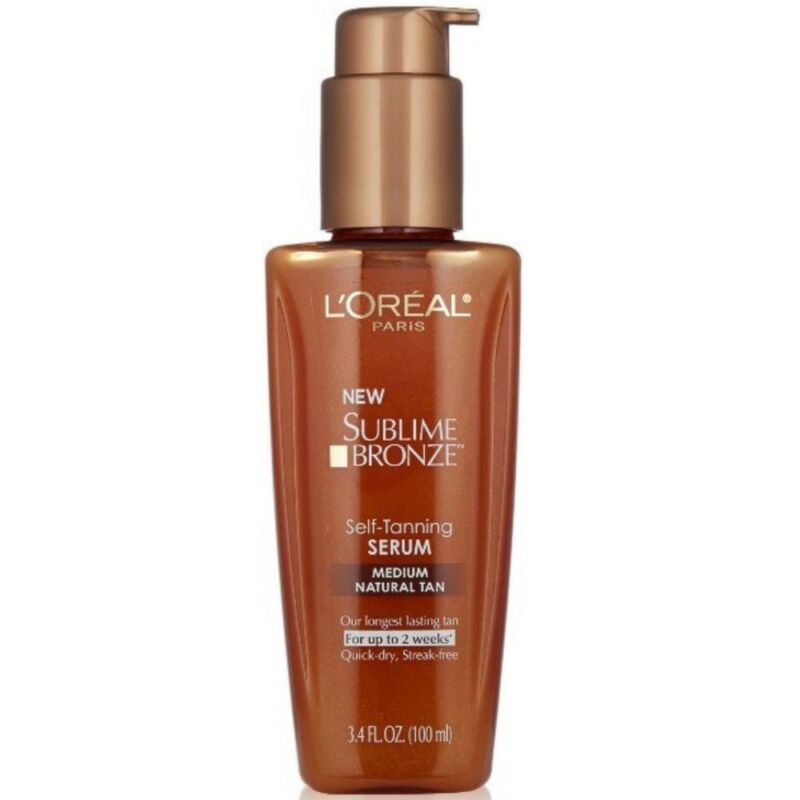
Key features:
- Instant bronzing effect
- Develops into medium-dark tan
- Lasts about 1 week
- Floral citrus scent
For quick color payoff on vitiligo spots, I recommend L’Oreal Paris Sublime Bronze Serum. This serum has color guide technology that provides instant bronzing.
The guide color is useful for seeing exactly where you’ve applied the self tanner. It ensures you get even coverage on all the vitiligo patches.
Over the next 8 hours, the instant bronze transforms into a natural-looking medium-dark tan. On me, the color lasts around 5-7 days before fading.
The serum formula has a moisturizing base of aloe vera and glycerin. It dries down quickly after application without feeling sticky.
The scent is best described as a floral citrus. I find it fairly mild and inoffensive. For quick color results plus a glimpse of instant gratification, this serum really delivers.
5. Best Vitiligo Camouflage: Oxyvita Skin Camouflage Gel
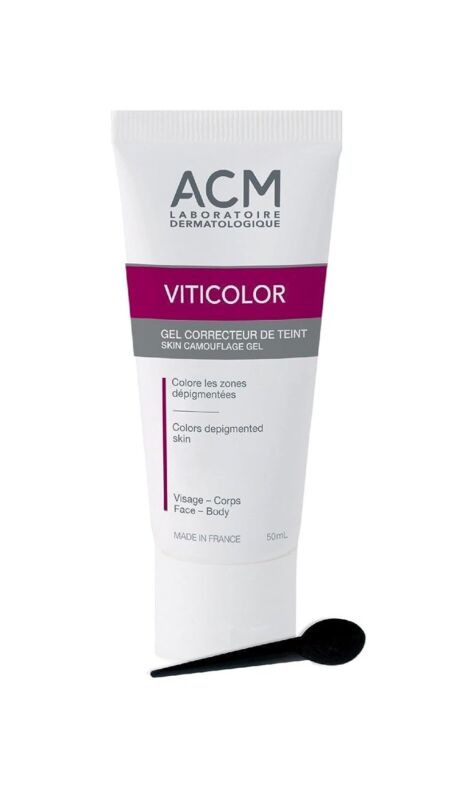
Key features:
- Made specifically for vitiligo
- Camouflages white patches
- Lasts about 24 hours
- Easy brush applicator
Finally, I have to mention the Oxyvita Skin Camouflage Gel. This is a specialized product formulated just for covering up vitiligo.
It comes in 10 different shade options to match various skin tones. I use the Medium shade which helps conceal my pale spots seamlessly.
The gel contains pigments that adapt to your skin color as they oxidize throughout the day. The coverage lasts around 24 hours before needing a touch up.
Application is easy thanks to the included brush. I dab it directly onto each vitiligo patch and blend the edges smoothly.
Some users find this gel drying if applied too heavily. I avoid this issue by applying thin layers. A little really goes a long way.
For flawless, temporary coverage of vitiligo, this camouflage gel is hard to beat. The skin-matching shades make it disappear completely.
How I Apply Self-Tanners for Vitiligo
As someone who has lived with vitiligo for years, using self-tanner has been a game-changer for boosting my confidence. When summer rolls around, I rely on self-tanning to help conceal all of the uneven white patches on my body.
Through plenty of trial and error, I’ve figured out a routine that gives me natural-looking, streak-free results that last. Here’s a step-by-step look at how I apply self-tanner to camouflage my vitiligo:
- Prep – I always start by gently exfoliating my body in the shower. I’ll focus extra on rough, flaky areas which are common vitiligo spots. Smoothing away dead skin helps the color absorb evenly.
- Protect – Before applying any tanner, I coat my nails, cuticles, eyebrows and hairline with a thin layer of petroleum jelly. This prevents staining from any excess product.
- Application – I use a tanning mitt to smooth my self-tanner onto each pale vitiligo patch. Using light dabbing motions, I blend the edges outward where the tan meets my regular skin tone.
- Blending – Blending is so important for a natural look! I carefully sweep over borders to create a seamless transition between my tanned skin and covered vitiligo spots.
- Layering – If needed, I’ll do another round of layers to build more color on stubborn spots. But I’m careful not to overdo it to avoid an unnatural orange tone.
- Moisturize – Once my self-tan is fully dry, I finish by applying moisturizer. The hydration helps prolong the results.
When I follow these steps, I’m able to achieve perfectly bronzed, even-toned skin. My vitiligo becomes virtually undetectable! I can rock shorts, swimsuits and sleeveless shirts with confidence.
How Does Self Tanner Work on Vitiligo?
Before jumping into the product overviews, let’s quickly cover the basics of how self tanner works for vitiligo.
Self tanner contains an active ingredient called DHA (dihydroxyacetone). When DHA comes into contact with dead skin cells, it causes a chemical reaction that turns the skin brown. This creates an artificial tan that mimics the look of a natural tan.
When applied directly to white vitiligo patches, self tanner can help blend the area into the surrounding skin tone. The result is a more even, uniform complexion.
However, it’s important to note that self tanner only provides temporary coloring for vitiligo. As the tan naturally fades over 3-10 days, you’ll need to reapply regularly to maintain coverage.
How Long Does Self Tanner Last on Vitiligo?
On average, self tanner lasts 3-10 days on vitiligo patches before fading. However, the longevity depends on several factors:
- Application – Proper exfoliating and blending leads to longer-lasting color. Rubbing or improper removal can make it fade faster.
- Skin type – Dry, flaky skin from vitiligo tends to repel self tanner. Moisturizing helps it absorb better and cling longer.
- Frequency – Frequent washing, sweating, and friction against clothing will break down the tan quicker.
- Potency – Higher percentages of DHA lead to deeper color that lasts longer before fading.
- Sun exposure – Any time in the sun will cause self tan to fade faster as the tan wears away on top layers of skin.
Using a gradual self tanner or daily moisturizer with DHA can help prolong the results. But in general, expect to reapply every 5-7 days for optimal vitiligo coverage.
Do Self Tanners Stain Vitiligo Spots?
This is a common concern, but when used properly, self tanners will not permanently stain vitiligo patches. Here are some tips to avoid staining:
- Spot test first – Always do a patch test on a small area to check for any irritation or discoloration before full application.
- Avoid rubbing – Rubbing or abrasion can drive pigment deeper into the skin making it harder to remove.
- Gently wash it off – Rinse with lukewarm water and gently wash tan residue from the skin without harsh scrubbing.
- Use an exfoliant – Chemical exfoliants with AHAs help lift staining from the surface without irritation.
- Moisturize after – Keeping the skin hydrated prevents dryness and flaking that can trap pigment.
Following the manufacturer’s instructions and patch testing first will minimize any risk of staining from self tanners on vitiligo.
FAQs
Are self tanners safe for vitiligo skin?
Yes, self tanners are generally safe for use on vitiligo spots when used properly. Look for hydrating formulas with antioxidants and natural oils to nourish skin. Always do a patch test first.
How do you apply self tanner to blend vitiligo?
Only apply tanner directly onto the lighter vitiligo patches. Use a tanning mitt and blend the edges outward into your regular skin using light, sweeping motions.
What is the active ingredient in self tanners?
The active ingredient that creates the tan color is called dihydroxyacetone, or DHA. It’s derived from natural plant sources like sugar beets or sugar cane.
Should you exfoliate before using self tanner on vitiligo?
Yes, it’s recommended to exfoliate before self tanning vitiligo. This will remove any dry, flaky skin so the tanner absorbs evenly for a smooth finish.
Does self tanner work for vitiligo on hands/fingers?
Self tanner can effectively camouflage vitiligo spots on the hands and fingers. Using a tanning mitt helps apply an even coat for natural-looking results.
Covering Up Vitiligo with Self-Tanners
While not a cure, self-tanners offer those with vitiligo a simple way to achieve more evenly toned and confident-looking skin. With consistent use, I’ve found that I rely much less on heavy makeup and clothing to conceal my white patches.
Choosing a self-tanner specifically formulated for gradual, natural-looking color is key for seamlessly covering up vitiligo. My top recommendations provide buildable, customizable coverage while caring for the skin.
Focus on taking your time to apply self-tanner evenly and to blend and fade edges. With a little trial and error, self-tanners can be extremely effective for temporarily minimizing the appearance of vitiligo.

Founded by Sophia Rodriguez, IGXO Cosmetics is a PETA-certified, cruelty-free, and vegan makeup brand.
